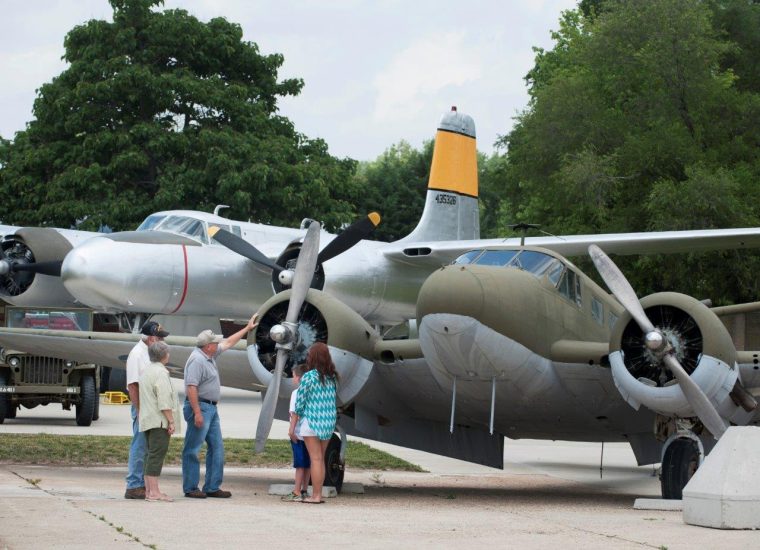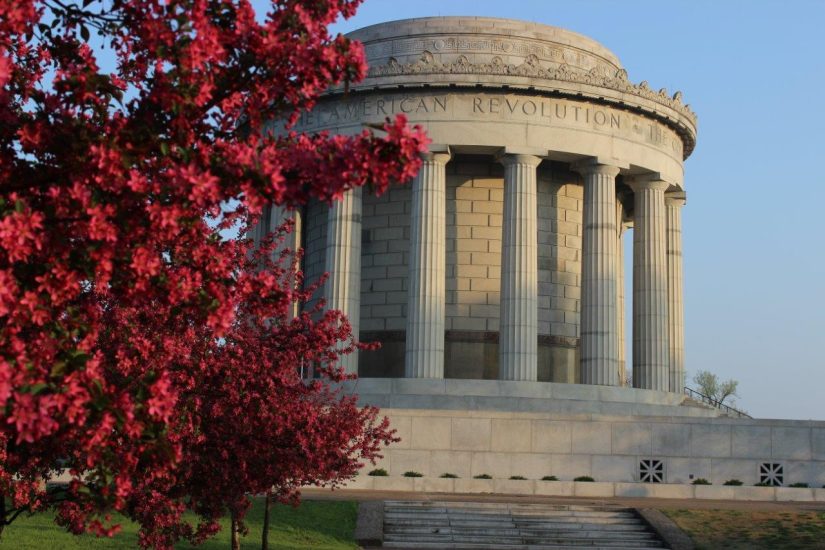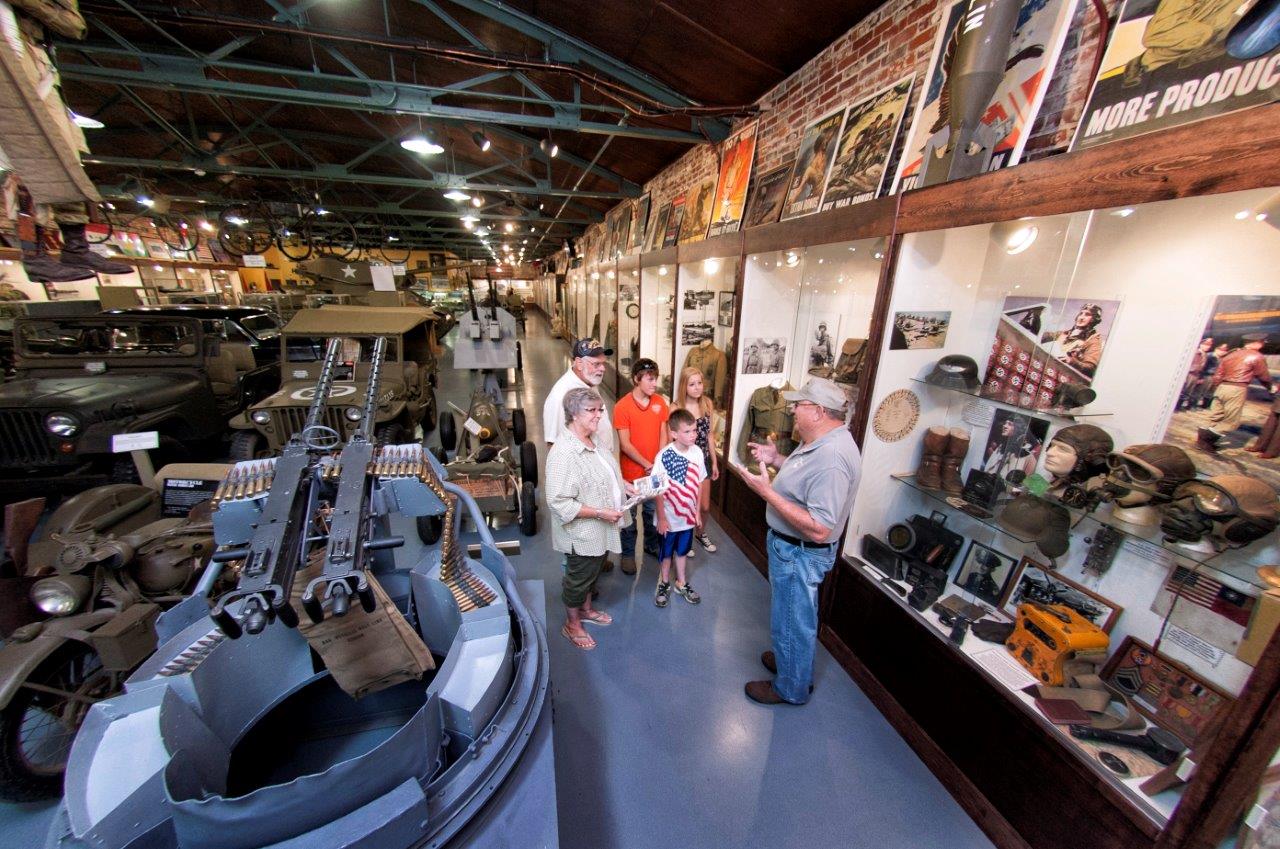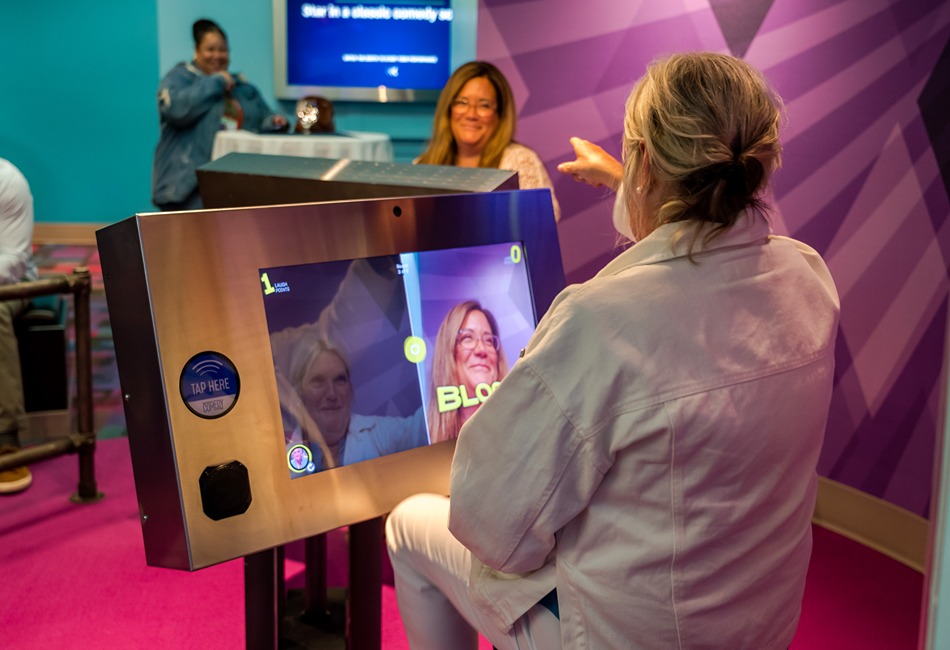Marshal your troops to these patriotic places
Indiana abounds with monuments and historical sites that honor the brave warriors who valiantly have served our country, from the American Revolution and 20th century world wars to Vietnam, Iraq and Afghanistan. Scattered throughout the state, military heritage attractions range from museums and memorials to battlefield parks, reconstructed forts and even a well-preserved ship.
Indianapolis, the state capital, maintains more acreage dedicated to honoring veterans than any other U.S. city, and only Washington, D.C. has more monuments dedicated to those who fought in military conflicts.
In the heart of downtown Indianapolis, the Indiana War Memorial (IWM) Plaza Historic District includes the free-admission Indiana War Memorial Museum, a magnificent neoclassical treasure house of military artifacts; three parks, four fountains; and 25 acres of monuments, statues and sculptures.
The district’s most prominent property is the Soldiers & Sailors Monument, the towering centerpiece of Monument Circle, a busy traffic roundabout at the intersection of Market and Meridian streets and the very hub of downtown Indianapolis. You can climb the 330 steps (or take the elevator) to the observation deck of the imposing structure completed in 1902 to honor Hoosiers who served in the Revolutionary War, War of 1812, Mexican War, Civil War, Frontier Wars and Spanish-American War. The lower level’s museum spotlights Indiana’s involvement in the Civil War.
On the five-block-long plaza two blocks north of Monument Circle, the American Legion Mall features the Indiana World War II, Korean War and Vietnam War memorials as well as the national headquarters of the American Legion, the largest wartime veterans’ organization in the world.
A few blocks away from the plaza, on the Central Canal in White River State Park, the USS Indianapolis CA 35 Memorial recognizes those who died on the last U.S. ship to sink in World War II. Created in the shape of the cruiser itself, the gray-and-black granite memorial has the story of the sinking etched on one side and, on the other, the names of all of those who served. Of the approximately 1,200 sailors on board, only 317 survived.
The USS Indianapolis Gallery features firearms and other artifacts
A fan favorite at the IWM museum is the USS Indianapolis Gallery, which features military firearms and uniforms, an AH-1 Cobra attack helicopter and hundreds of other artifacts, photos and documents. Don’t miss the museum’s awe-inspiring, 110-foot-tall Shrine Room, which contains 24 beautiful stained-glass windows.
The one-acre Congressional Medal of Honor Memorial, also on the canal, consists of 27 curved glass walls paying tribute to more than 3,400 Medal of Honor recipients representing 15 different conflicts. Every day at dusk, a sound system plays recorded stories of medal winners or the conflicts in which they fought.
The “Fort” in Fort Wayne, Indiana’s second-largest city, comes from the succession of frontier military forts that were constructed in the 18th and early 19th centuries at the spot where the St. Marys and St. Joseph rivers join to form the Maumee. Downtown, near the site of the last fort, stands the Old Fort, an impressive replica of the wooden post built in 1815-1816 and decommissioned soon after. The grounds are open to explore daily; living history demonstrations and reenactments are scheduled on select weekends.
A few blocks from the Old Fort, in Freimann Square, is another good photo op—an equestrian statue of General “Mad” Anthony Wayne, the Revolutionary War hero for whom the city is named. After Wayne’s 1794 victory at Fallen Timbers in the Northwest Indian War against Native Americans and their British allies, he established the first American fort at the three rivers, thus founding the settlement of Fort Wayne the same year.
In West Lafayette, learn about a famous battle at the Tippecanoe Battlefield & Museum. It was on this site in 1811 that U. S. forces fought Chief Tecumseh’s Native American confederation and launched William Henry Harrison, then governor of the Indiana territory, to national fame and eventually the presidency. In the 1840 election in which Harrison teamed up with running mate John Tyler, the slogan “Tippecanoe & Tyler Too” became one of the most famous electioneering catch-phrases in American history.

The Indiana Military Museum in Vincennes boasts one of the country’s most comprehensive collections of U.S. military memorabilia.
Saluting the brave men and women who have served in America’s wars, the Indiana Military Museum in Vincennes boasts one of the country’s most comprehensive collections of U.S. military memorabilia.
In the main building, some members in your group may gravitate to the Civil War, while others will want to focus on World War I or II. Among the oldest artifacts are muskets dating back to the period between the American Revolution and War of 1812. The succession of glassed-in exhibits progresses chronologically, ending up with the Korean, Vietnam, Iraq and Afghanistan wars.
Besides glass cases crammed with memorabilia—from weapons, helmets and gas masks to medals, newspaper clippings and magazine covers—there are tanks, jeeps, bicycles, motorcycles and other vehicles in the middle of the room. Vintage patriotic, recruiting and War Bonds posters, along with flags foreign and domestic, festoon the walls.
World War II buffs are impressed with the uniforms belonging to Generals Patton and Eisenhower. Ike’s uniform, tailor-made in London, was worn during the week of the D-Day invasion of Normandy. Other reminders of D-Day include a paratrooper’s jacket and bits and pieces found in the sands of Omaha Beach, including shrapnel, spent ammunition and a fighting knife. Another heroic stand, the Battle of Iwo Jima, is remembered with a captured Japanese rifle and tray of sand from the island. Also see goggles used by pilots who dropped atomic bombs on Nagasaki and items from Nazi Germany such as a formal napkin and bit of the fireplace from Hitler’s Berchtesgaden retreat.
Women at War exhibit
The “Women at War” exhibit recognizes pilots, nurses and those employed in factories on the home front during World War II. Displayed are the coveralls, goggles, shoes, drill, lunch box and clip-on ID badge of one of the many female workers who helped build the Navy’s LSTs (Landing Ship Tanks) at the Evansville (Indiana) Shipyard. Inside the case is a “Rosie the Riveter” poster. The domestic scene is also highlighted in a display of WWII-era toys—tanks, boats, planes—that had to be made of wood or cardboard because metal was needed for the war effort.
A newer building showcases large vehicles in a series of dioramas, from World War II to the present day. Outdoors, visitors can get a taste of trench warfare, often used as a symbol of World War I, by walking through a set of replica trenches from the period. Also displayed outdoors are military aircraft, tanks and artillery.

George Rogers Clark National Historical Park honors an American military hero on the site of a British fort captured during a crucial struggle against Great Britain during the Revolutionary War.
George Rogers Clark National Historical Park, another Vincennes attraction, honors an American military hero on the site of a British fort captured during a crucial struggle against Great Britain during the Revolutionary War, a campaign that wrested the western territories from British control. The visitor center offers exhibits and a dramatic 30-minute film on Clark (a Virginian) and his citizen militia, while a granite memorial (the largest Greek Revival building outside of Washington. D.C.) boasts an impressive rotunda with a bronze statue of the general and murals depicting events that changed the course of history. Situated on the banks of the Wabash River, the shrine is one of only three National Park Service sites in Indiana.
The historic southern Indiana town of Corydon, the first capital of Indiana, saw the only Civil War battle fought in Indiana. Battle of Corydon Memorial Park recalls the July 9, 1863 battle in which the locally mustered Harrison County Home Guard of about 450 men faced more than 2,400 Confederate regulars under the command of Gen. John Hunt Morgan. After winning the battle, Morgan received word of Gen. Robert E. Lee’s defeat a few days earlier at Gettysburg in Pennsylvania. A cabin on the grounds illustrates life at the time. A battle re-enactment takes places each July.
Also in Corydon, Harrison County Discovery Center has a 360-degree multimedia presentation that puts you right in the middle of the Civil War battle, one of only two fought north of the Mason-Dixon Line (the other being Gettysburg).
Moored in the Ohio River city of Evansville, the USS LST-325 Ship Memorial serves as a museum and shrine to those men who served on LST (Landing Ship, Tank) amphibious vessels, which were used during World War II and the Korean and Vietnam wars to transport battle-ready personnel, supplies and vehicles, particularly tanks, to enemy shores. The last full operational landing ship tank in existence, it participated in the 1944 invasion of Normandy and went on to serve in the Pacific theater and Korean War.
For more information, check out visitindiana.com/military/
Discover more great stories about the tourism industry when you Subscribe to Leisure Group Travel magazine for FREE.
By Randy Mink






